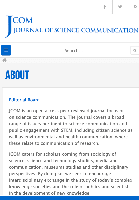
JCOM-Journal of Science Communication
Scope & Guideline
Elevating Standards: Pioneering Science Communication Research
Introduction
Aims and Scopes
- Interdisciplinary Approaches to Science Communication:
The journal explores the intersection of various disciplines such as sociology, education, art, and technology in shaping effective science communication strategies. - Public Engagement and Citizen Science:
A core focus on enhancing public engagement through citizen science initiatives, encouraging participatory practices that empower communities and foster dialogue between scientists and the public. - Culturally Relevant Communication:
Emphasizes the importance of culturally relevant science communication that resonates with diverse audiences, especially marginalized communities, to promote inclusivity and address social justice issues. - Evaluation and Impact Assessment:
The journal prioritizes the evaluation of science communication practices and their impacts on public understanding and attitudes towards science, ensuring accountability and continuous improvement. - Use of Creative and Artistic Methods:
Explores the integration of arts-based approaches in science communication, utilizing creativity to engage audiences and facilitate deeper understanding of scientific concepts. - Digital and Social Media Strategies:
Investigates the role of digital platforms and social media in disseminating scientific information and shaping public discourse around science, especially in the context of misinformation.
Trending and Emerging
- Inclusion and Social Justice in Science Communication:
Recent publications show a significant increase in discussions around inclusivity and social justice, emphasizing the need for science communication practices to address inequalities and engage marginalized voices. - Integration of Artificial Intelligence and Technology:
The role of AI and digital tools in enhancing science communication strategies is gaining traction, reflecting the technological advancements and their implications for public engagement. - Arts and Creative Approaches:
There is a growing trend towards utilizing arts-based methods in science communication, leveraging creativity to engage audiences and convey complex scientific ideas effectively. - Community-Centric Engagement Models:
An emerging focus on community-centric models of engagement, where local knowledge and perspectives are valued, and participatory approaches are prioritized. - Health Communication and Misinformation:
The COVID-19 pandemic has amplified the importance of effective health communication, with an increasing number of studies addressing misinformation and strategies for public health engagement.
Declining or Waning
- Traditional Science Journalism:
There is a noticeable decrease in publications centered around traditional science journalism, as the field shifts towards more participatory and community-driven approaches to science communication. - Purely Academic Perspectives on Science Communication:
Papers that focus solely on academic theories without practical application or public engagement aspects are becoming less frequent, indicating a shift towards more applied, real-world perspectives. - Focus on Western Frameworks:
A decline in papers that exclusively utilize Western frameworks for understanding science communication, as there is a growing emphasis on decolonizing science communication and incorporating diverse epistemologies. - Generalized Public Understanding of Science:
The once prevalent theme of broadly assessing public understanding of science is waning, with a growing focus on specific demographics and the nuances of communication effectiveness. - One-Way Communication Models:
There is a declining interest in one-way communication models that do not facilitate dialogue or interaction, as the field increasingly values two-way communication and engagement.
Similar Journals

Media International Australia
Bridging Theory and Practice in Media ResearchMedia International Australia is a leading journal that occupies a unique position at the intersection of communication and cultural studies. Published by SAGE Publications Ltd, this journal has established itself as a vital platform for scholarly discourse since its inception, now converging efforts from 2008 to 2024. With an impressive Q1 ranking in both the Communication and Cultural Studies categories, it ranks 12th out of 1304 in Cultural Studies and 42nd out of 511 in Communication, placing it within the 99th and 91st percentiles respectively according to Scopus metrics. The journal is committed to providing access to rigorous research that reflects contemporary issues in media, making it essential reading for researchers, professionals, and students keen on advancing their understanding of media's role in society. Despite not being fully Open Access, it ensures that quality research remains accessible through institutional subscriptions, allowing a broad audience to benefit from its insightful contributions.
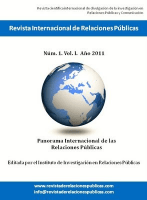
Revista Internacional de Relaciones Publicas
Pioneering insights into the evolving landscape of communication.Revista Internacional de Relaciones Publicas is a prominent open-access journal dedicated to advancing the field of public relations and communication research. Published by UNIV MALAGA, INST INVESTIGACION RELACIONES PUBLICAS, this journal has been pivotal since its establishment in 2011 in disseminating innovative research and insights related to public relations practices, theories, and trends globally. With the ISSN 2174-3681, the journal reaches a diverse audience, including researchers, professionals, and students, fostering a collaborative environment for knowledge exchange. Despite the absence of an HIndex or categorized quartiles, its commitment to high academic standards ensures the relevance and quality of published work. Situated in the vibrant city of Malaga, Spain, the journal encourages contributions that explore the evolving dynamics of public relations in contemporary society, making it an essential resource for anyone interested in the nuances of communication strategies and their impacts.

Metode Science Studies Journal
Pioneering New Perspectives in Science StudiesMetode Science Studies Journal, published by UNIV VALENCIA, BOTANICAL GARDEN UV, is an esteemed open-access journal dedicated to advancing scholarly discourse in the fields of history and philosophy of science and multidisciplinary studies. Since its inception in 2013, the journal has positioned itself as a vital resource for researchers, professionals, and students, fostering an environment for innovative research and cross-disciplinary dialogue. Based in the vibrant city of Valencia, Spain, this journal aims to publish high-quality articles that explore the intricate relationships between scientific practices and philosophical inquiries. With a current impact factor demonstrating its relevance in the academic community, the journal is indexed in Scopus, ranking in the 52nd percentile for history and philosophy of science and the 33rd percentile for multidisciplinary studies. Scholars can access a breadth of research outputs that span from 2015 to 2024, thereby contributing significantly to the intellectual landscape of the respective fields.

Communication Today
Advancing insights in communication and marketing.Communication Today is a leading interdisciplinary journal dedicated to advancing the field of communication and marketing studies. Published by UNIV SS CYRIL & METHODIUS TRNAVA, this journal offers a platform for insightful research and discourse from 2017 to 2024, making it a vital resource for academics and professionals alike. With an ISSN of 1338-130X, it is indexed in reputable databases and has achieved notable rankings, including Q3 in both Communication and Marketing categories as of 2023. Despite its open access status being unspecified, the journal remains committed to disseminating knowledge that fosters effective communication strategies and innovative marketing practices. Whether you are a seasoned researcher or a budding scholar, Communication Today serves as an essential conduit for the exchange of ideas and research findings in the ever-evolving landscape of communication and marketing.
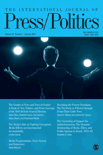
International Journal of Press-Politics
Advancing Insights at the Intersection of Communication and GovernanceThe International Journal of Press-Politics, published by SAGE Publications Inc, stands as a premier scholarly platform at the intersection of communication, sociology, and political science. With a distinguished history dating back to its inception in 2003 and maintaining its relevance through 2024, this journal is recognized in the academic community for its rigorous exploration of the dynamics between the media and political processes. The journal proudly holds a Q1 ranking in both Communication and Sociology and Political Science categories, placing it in the top tier of its field, underscored by its impressive Scopus rankings, which reflect its global influence and reach. With an intention to foster innovative research and discourse, IJPP is committed to being accessible, contributing significantly to the understanding of how press and politics shape societal narratives, thus serving as an essential resource for researchers, professionals, and students alike. Explore this esteemed journal to engage with cutting-edge studies that drive the field forward.
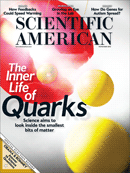
SCIENTIFIC AMERICAN
Illuminating Complex Ideas for a Broader AudienceSCIENTIFIC AMERICAN, published by Springer, stands as a prestigious multidisciplinary journal dedicated to disseminating cutting-edge scientific knowledge across a range of fields. Established in 1947, this journal has been integral in bridging the gap between scientific research and public understanding, making complex ideas accessible to a broader audience. With an ISSN of 0036-8733 and E-ISSN of 1946-7087, it maintains a strong standing within the academic community, currently ranked in the Q3 category for its multidisciplinarity, and is positioned at #93 out of 120 in its Scopus ranking, reflecting its valuable contribution to scientific discourse. While the journal is not open access, its long history and commitment to knowledge sharing ensure it remains a vital resource for researchers, professionals, and students alike, fostering a deeper appreciation of science in society.

Frontiers in Communication
Advancing the Boundaries of Communication ResearchFrontiers in Communication is a prestigious open-access journal published by FRONTIERS MEDIA SA, dedicated to advancing the field of communication studies. Established in 2016 and situated in Switzerland, this journal has quickly ascended to notable ranks, achieving a Q1 category in both Communication and Social Sciences (miscellaneous) as of 2023. With an impressive Scopus rank, positioning it in the 75th and 78th percentiles for its respective categories, Frontiers in Communication serves as a vital platform for innovative research, interdisciplinary dialogue, and the dissemination of knowledge in the rapidly evolving landscape of communication. The journal emphasizes accessibility and intellectual exchange, providing an open-access format that ensures unrestricted access for researchers, professionals, and students alike. By fostering collaboration and exploration across various communication frameworks, Frontiers in Communication plays a crucial role in shaping the future discourse within the field.
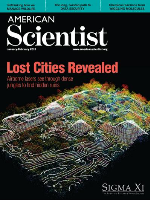
AMERICAN SCIENTIST
Engaging Minds in the Pursuit of Scientific Excellence.AMERICAN SCIENTIST is a prestigious multidisciplinary journal published by SIGMA XI-SCI RES SOC, renowned for its commitment to disseminating high-quality scientific research and insights since its inception in 1946. With an ISSN of 0003-0996 and an E-ISSN of 1545-2786, this journal serves as a valuable resource for researchers, professionals, and students alike, seeking to engage with current scientific discussions across various disciplines. Though it is not an Open Access journal, its articles are well-regarded in the academic community, evidenced by its Scopus ranking, placing it in the top 80th percentile among 88 multidisciplinary journals. Covering a wide range of topics, AMERICAN SCIENTIST aims to bridge the gap between science and the public by providing accessible writing that encourages informed dialogue around scientific advancement. With its extensive historical range from 1946 to 2016, it continues to be a critical platform for the exchange of innovative ideas and research findings that shape the future of science.
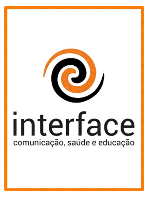
Interface-Comunicacao Saude Educacao
Empowering voices in communication, health, and education research.Interface-Comunicacao Saude Educacao is a leading open-access journal published by UNIV ESTADUAL PAULISTA-UNESP, dedicated to advancing knowledge and scholarship in the interrelated fields of communication, education, and health. Established since 1997, this Brazilian journal provides a vital platform for researchers, professionals, and students to share innovative research, critical analyses, and empirical studies that contribute to the fields it serves. With a commendable ranking in Q3 across its categories and indexed in Scopus, the journal occupies a significant position in the scholarly community, facilitating discourse that addresses contemporary issues in social sciences. As the journal converged its thematic focus in 1980 and 2004, it continues to thrive from 2007 to 2024, ensuring its relevance and commitment to quality. Positioned in a diverse academic context, Interface-Comunicacao Saude Educacao plays an essential role in fostering interdisciplinary connections and enhancing practice-oriented research in Brazil and beyond.

International Journal of Communication
Navigating the evolving landscape of communication.International Journal of Communication, published by USC Annenberg Press, is a premier open access journal dedicated to advancing the field of communication studies. Since its inception in 2007, the journal has provided a vital platform for researchers, professionals, and students to engage with cutting-edge research, theoretical frameworks, and empirical studies. With an impressive Q1 quartile ranking in Communication for 2023 and a notable Scopus rank of 156 out of 511 in the Social Sciences Communication category, the journal consistently contributes to high-quality scholarly discourse. It covers a wide array of topics, making it a crucial resource for those looking to stay informed about the latest developments in communication research. The journal's commitment to open access enhances its reach and impact, fostering a global community of academics and practitioners dedicated to exploring the complexities of communication in contemporary society. This makes the International Journal of Communication an essential read for anyone interested in understanding the dynamics of communication today.